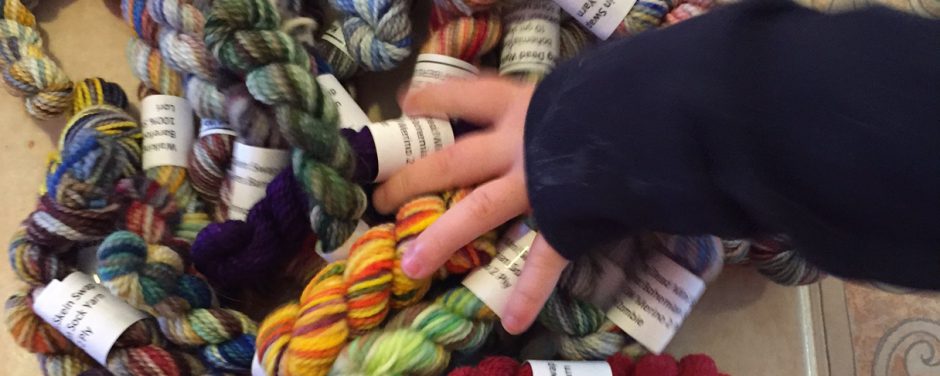Blocking is one of those things that not every knitter does. My mom, for example has been knitting for years and had never blocked a project up until about three years ago. I don’t know that she has blocked on since.
I’m a big fan of blocking, though it isn’t something that I do on every project. I own a pair of sock blockers that I have rarely used. Mainly, they stretch out the sock to make it easier to get a good picture. I don’t really see much of a point in blocking socks.
In other projects, however; it makes a world of different. My recently finished Siobhan Shawl is one of those projects.
This is Siobhan, just off of the needles.

And a close up. I love this stitch pattern, it creates such a great texture that works so well with the yarn.

I decided to use a wet blocking method for this piece. The overall process can be a bit time consuming, but is pretty simple.
As the name wet blocking suggests, first you need to get the piece wet. I like to add a little wool wash (Soak is my favorite) to the water.
After the piece has soaked for awhile, pull it out and gently wring out the excess water. I usually lay it out on a bath towel, roll it up with the towel, and then step on it to get some of the water out.
Take the damp piece and pin it out according to pattern schematics or personal preference.

This is the time consuming part of the process. Though it can be accomplished with any type of rust-proof pin and a pinnable surface, I have some tools to make things a bit easier.
There are many options out there for a blocking surface. In the past, I’ve used a towel on top of a matress or on the floor. Right now, I’m using some children’s play mats that I found super cheap on amazon. In my house they also double as a dump truck racing track. Maybe someday, I’ll have some of the nice blocking mats out there and not have to share with a toddler; but for now, the play mats do the trick.
For pinning along the top edge, I used blocking wires, thin stainless steel wires that can be threaded through the knitting. One wire takes the place of a lot of little pins on the long edges.
I also have a set of Knitter’s Pride Knit Blockers. Each block has either four or two pins. It is a fantastic alternative to the standard t-pin and I would love a second set!
For this task, I used all of the Knit Blockers and went through all of the t-pins I could find and still needed more. Normally, I have more than enough pins for any project. However, my charming zombie head pin cushion has gone missing along with the majority of my pins. I was forced to get creative at the end.
Once everything is pinned down, you let the piece dry. If you are lucky, your knitting can dry without attracting feline. In my house, that doesn’t happen.

Once everything is dried, unpinned the piece and it is ready to go!
Remember the stitch pattern I showed you before? Here it is again, followed by a picture of the same stitches after blocking.
See the difference?









